15 Winter Things to Do in Japan: Hot Springs, Festivals, and Snow

Winter weather starts in December and ends around March in most regions of Japan. There are many things to enjoy in this chilly season. Read this article to learn about 15 exciting things that will warm up your winter, from skiing and snow festivals, to hot sake!
Skiing, Festivals, and Winter Things to Do in Japan

Pictures courtesy of JNTO Japan Photo Library
Along with its cool temperatures, Japan's winter offers everything from relaxing hot springs and thrilling winter sports to delicious cuisine. Visitors can also enjoy the coziness of the indoors, the clear skies, and ideal weather outside.
This article introduces 15 things you can look forward to during the beautiful cold season.
-
Table of Contents
- 1. Soak in Picture-Perfect Hot Springs
- 2. Go Skiing and Snowboarding!
- 3. Go Ice Skating
- 4. Explore Japan's Mysterious Snowscapes
- 5. Visit Kenrokuen Garden in the Winter
- 6. See Light Up Displays and Larger-than-Life Ice Art
- 7. Watch Monkeys Bathe at Jigokudani Onsen
- 8. Get Cozy Under a Kotatsu
- 9. Warm Up with Delicious Japanese Hot Pot
- 10. Eat Seasonal - Fresh Crab, Strawberries, and Mikan Oranges
- 11. Sip on Hot Sake and Beverages
- 12. Experience Wintertime Festivals
- 13. See the Dainty Plum Blossoms
- 14. Shop Until You Drop!
- 15. Appreciate Chocolates on Valentine’s Day and White Day
1. Soak in Picture-Perfect Hot Springs
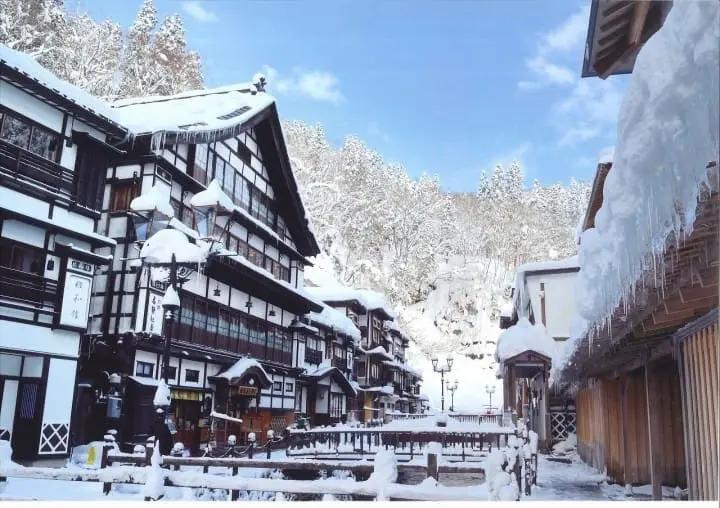
Picture from Ginzan Onsen, A Traditional Resort: Access, One-Day Trips, And More
Bathing in an onsen, or natural hot spring, is a highly recommended activity in Japan at any time of the year. Winter, in particular, is a great time to take a dip and warm up at the end of a cold day. Here are suggestions for onsen where you can gaze out at the snowy scenery as you bathe, either through a window or by being in an outdoor bath.
Ginzan Onsen in Yamagata Prefecture is a renowned hot spring town with high-quality springs and snow piled tall. The inn architecture and bright red bridge are said to resemble that of Studio Ghibli’s "Spirited Away".
In Nagano Prefecture in central Japan, Shibu Onsen, is a popular hot spring known for its adorable snow monkeys bathing in the onsen at Jigokudani Wild Monkey Park. After quietly observing the monkeys, you can warm up too in the nearby hot springs district.
In western Japan, the picturesque hot spring district in Kinosaki Onsen in Hyogo Prefecture becomes blanketed with snow in the winter. It is easily accessible from Kyoto, Osaka, and Kobe.
After a full day of traveling in the cold, make sure to unwind and warm up in the relaxing water!
2. Go Skiing and Snowboarding!
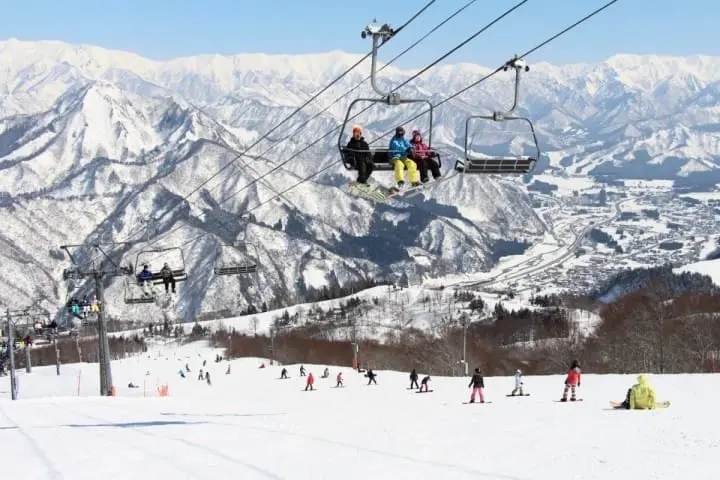
Japan is known for its powder snow, ideal for skiing and snowboarding, drawing many winter sports enthusiasts during the season (late November to early May, depending on the region) every year. There are many regions with slopes that both beginners and experienced skiers and snowboarders can enjoy.
Some of the more popular areas to enjoy winter sports are as follows:
- In Hokkaido, Niseko is internationally renowned for its good quality snow and great slopes. There is also Sapporo Kokusai Ski Resort, which is conveniently accessible from the city of Sapporo.
- GALA Yuzawa Snow Resort in Niigata Prefecture is just 75 minutes via bullet train from Tokyo and is a popular choice for enjoying winter sports.
- Nagano Prefecture is also famous for its slopes in Hakuba and other locations.
Whether you are a beginner or a seasoned winter sports athlete, these resorts are great for warming up your body through exercise and enjoying the snowy scene.
3. Go Ice Skating
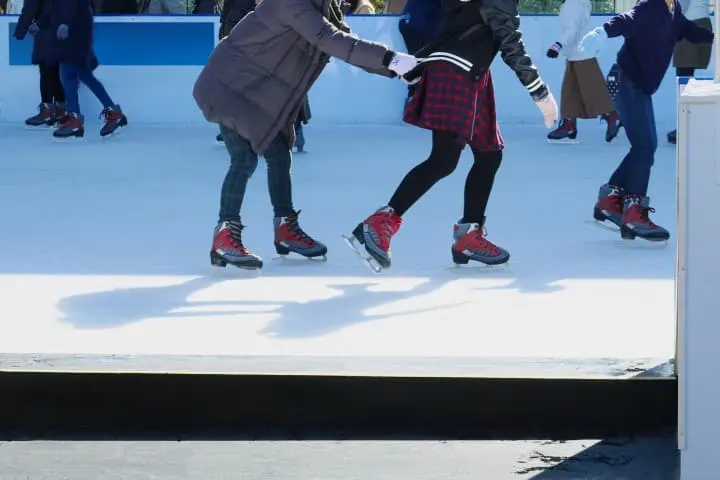
Outdoor ice skating rinks in Japan pop up in Tokyo, Osaka, and other major metropolitan areas annually, lasting from around December to February.
The rinks often light up at night or feature special art and music. Rental skates are available as well (usually an additional fee). While these temporary rinks tend to be small, they are fun to visit with friends for light skating to get into a festive mood.
In Tokyo, Tokyo SkyTree and Tokyo Midtown in Roppongi have popular ice skating rinks. Yokohama's Red Brick Warehouse also opens a rink.
In Osaka, there is ice skating right in front of JR Osaka Station, near the Grand Front Building.
Read also
4. Explore Japan's Mysterious Snowscapes

Picture courtesy of JNTO Japan Photo Library
Another way to have fun in the snow is to take in the phenomenal landscape that forms naturally. Venture beyond major cities and you will be able to discover how stunning the outdoors are in the winter.
North in Zao, Yamagata Prefecture (pictured above), mysterious hoarfrost on the trees appears from late December to March. Visitors can view this magical scene from a ropeway that operates during the day and night.
In addition, the JR Tadami Line that connects Niigata Prefecture and Aizuwakamatsu in Fukushima Prefecture is a spectacular train ride to take in the winter months. The surrounding ice and snow-covered landscape is a once-in-a-lifetime experience and is sure to take your breath away.
Another must-see is the UNESCO World Heritage site of Shirakawago Village in Gifu Prefecture, central Japan, which transforms into a romantic snowy scene in the winter. The thatched roofs of the traditional Japanese huts get covered in a thick, sparkling white snow.
Bundle up and go explore Japan's great outdoors in the snow!
Read also
5. Visit Kenrokuen Garden in the Winter
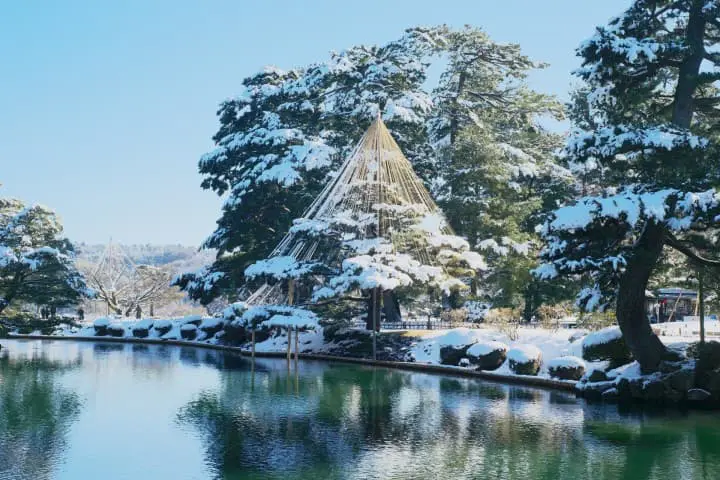
Kenrokuen is a traditional Japanese garden in Kanazawa, Ishikawa Prefecture. One of the most prominent gardens in Japan, its Edo period-style landscape is pristine, and grand karamatsu pine trees stand out.
The garden is gorgeous year-round, but in winter, the snow piles up on the trees and everything becomes coated with a thick layer of fluffy snow. Warm up at a nearby cafe after enjoying a stroll in this winter fantasy land.
6. See Light Up Displays and Larger-than-Life Ice Art
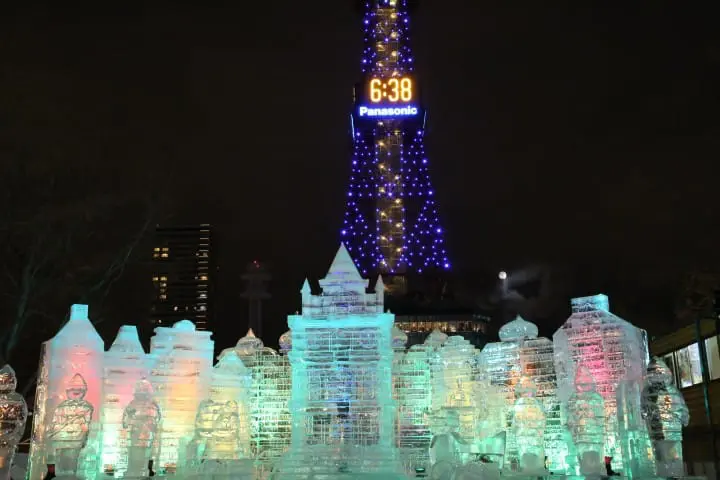
Picture courtesy of JNTO Japan Photo Library
Illuminations in Japan are often associated with the Christmas season, but they usually last the entirety of winter. These types of light up displays are common around train stations, shopping areas, and city streets.
Amusement parks, including Tokyo Disney Resort, also have illumination displays, so if you are looking for something fun and romantic, make sure to stay until the evening!
If you like art, put the Sapporo Snow Festival on your travel itinerary. Sapporo brings in countless visitors annually for its snow festival, in which three areas of the city feature huge snow and ice sculptures created by talented artists.
Previous years have featured everything from castles to scenes from popular works like "Attack on Titan" and "Star Wars" recreated out of ice. There are colorful illuminations at night, which create an even more magnificent scene.
In 2026, the Sapporo Snow Festival will be held from February 4 to February 11. This is an event not to miss if you are in Japan during this time.
7. Watch Monkeys Bathe at Jigokudani Onsen
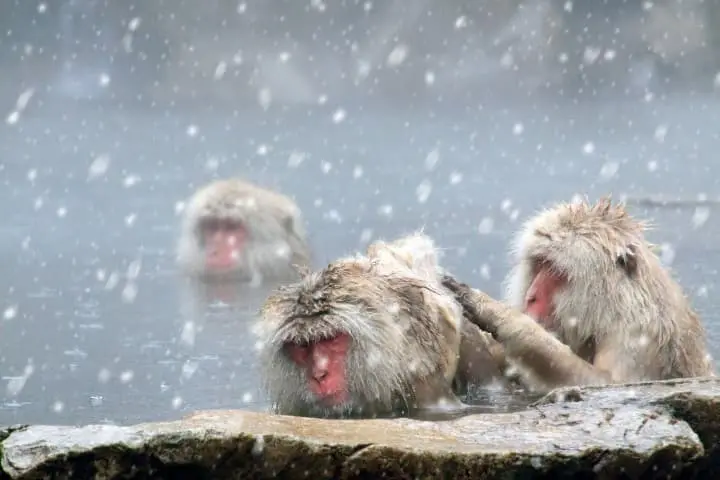
Visiting the endearing, adorable monkeys at Jigokudani Yaen-Koen, or Wild Snow Monkey Park, is on the must-do list of many travelers in Japan.
Internationally renowned, travelers will be charmed in an instant by seeing the adorable monkeys bathing in these hot springs.
Located in Nagano Prefecture, it takes approximately 41 minutes via express bus from JR Nagano Station. This is a must-visit spot for animal lovers.
8. Get Cozy Under a Kotatsu

Kotatsu are found in most Japanese homes, used during the cold months. They are electrically-heated tables covered with blankets, and are meant to be sat at, heating the lower half of your body. As central heating is not common in Japan, using a kotatsu is the ideal way to stay warm in a cold room.
The kotatsu is especially used during the New Year's holidays when families gather to eat and catch up. You can try using kotatsu yourself during a homestay or by visiting a Japanese home; they are not found at most hotels and ryokan in Japan.
9. Warm Up with Delicious Japanese Hot Pot

Savoring some hot pot cuisine at the end of the day is one of the best pleasures during winter. Japan has shabu-shabu, sukiyaki, and nabe, which are all body-warming hot pot dishes with hearty meat, seafood, and vegetables.
Nabe and sukiyaki are commonly made in homes in Japan. If you go to a supermarket, you will often find packages of vegetables and meat for the purpose of making nabe. These are easily prepared and customizable to different tastes.
Shabu-shabu, on the other hand, is more common to enjoy when dining out. This type of dish is fun for sharing with a group of friends or family, as diners can actively participate in making their own food. After cooking the ingredient briefly in the flavored stock, you can add flavor by dipping it into a citrus-flavored or sesame flavored sauce.
These hot pot dishes are filled with wholesome ingredients, taste exquisite, and will warm your entire body. Make sure to experience this traditional cuisine in the wintertime!
Read also
10. Eat Seasonal: Fresh Crab, Strawberries, and Mikan Oranges
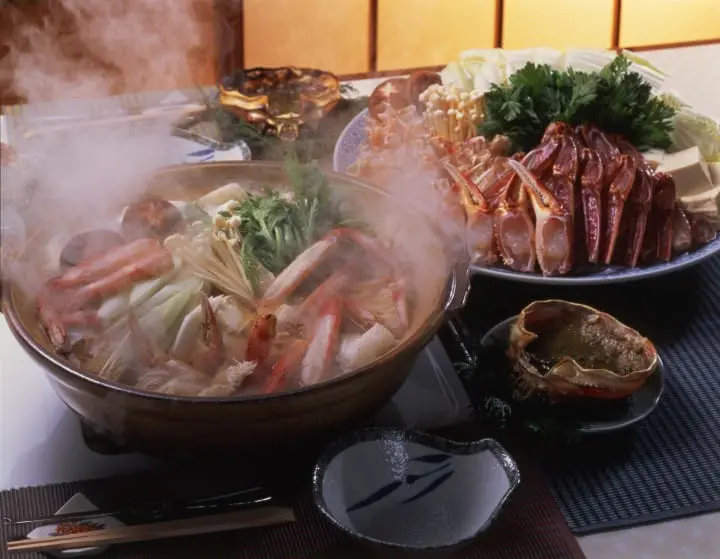
Picture courtesy of JNTO Japan Photo Library
There is no shortage of tasty ingredients and fruit in the winter. One of the most famous winter foods in Japan is Matsuba crab from Tottori Prefecture. This crab is internationally renowned for its fresh flavor and large size.
The best place to find this crab is by going to Tottori, of course, but the crab is also distributed, so you will find it on the menus of restaurants across Japan. Fukui and Hokkaido prefectures are also known for their delectable crab.
In addition to seafood, strawberries, mikan oranges, and yuzu are in season during this time.
At many farms, you can go strawberry picking and find high-quality strawberries and unique varieties, like white strawberries. Citrus fruit like mikan oranges and yuzu-flavored foods are thought to be good for health and fighting off colds.
11. Sip on Hot Sake and Beverages
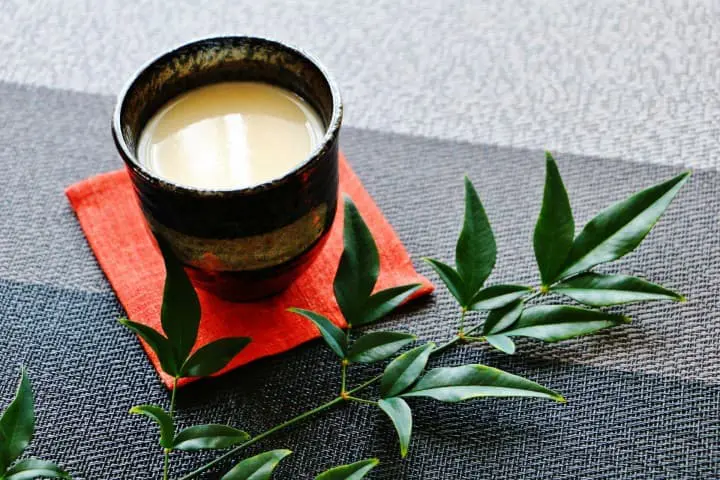
During winter, warm drinks are a must for most. Certain Japanese sake can be enjoyed hot, and are traditionally consumed during the New Year and other events. Try sake warm (to around 50°C) with junmai sake from brands like Kimoto and Yamahai, which have a rich flavor and body that come out when warmed up.
Another delicious and seasonal beverage is amazake, or fermented sweet sake. It contains minimal alcohol or none at all--check the labels to see which amazake you can enjoy with minors.
Amazake is consumed year-round in Japan, both chilled and warmed up. It is especially soothing and warming to drink hot on a cold day. This beverage contains health benefits, including probiotics, fiber, and minerals. You can find amazake sold in supermarkets and also at festivals.
12. Experience Wintertime Festivals
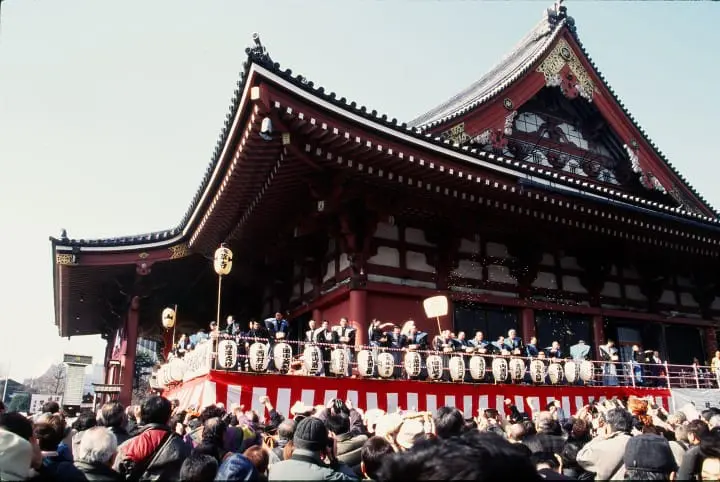
Picture courtesy of JNTO Japan Photo Library
Traditional Japanese festivities occur in the winter, just as they do during other times of the year. In particular, you can look forward to winter mochi pounding around the New Year holidays and Setsubun, a holiday welcoming spring, in early February.
Setsubun festivals are in early February and are held at temples and shrines. In Tokyo, Sensoji Temple in Asakusa and Kanda Myojin near Akihabara have large-scale events featuring bean throwing (mame maki), which is meant to keep out evil spirits and bring in good luck.
13. See the Dainty Plum Blossoms
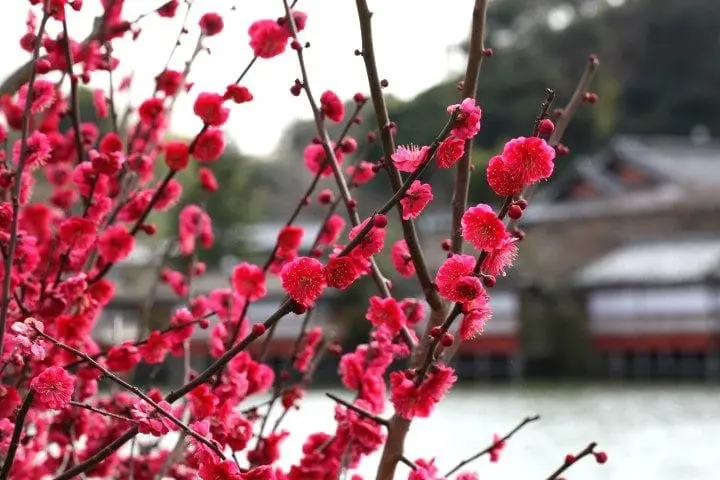
Before the sakura season, the sweetly fragrant and delicate plum blossoms come into bloom in February. Known as "ume" in Japanese, these flowers are thought to be one of the first signals of winter ending. You can view plum blossoms throughout Japan, and there are also festivals held to commemorate the flower, too.
In particular, Kairakuen in Ibaraki Prefecture is famous for its 3,000 plum trees that come into full bloom from mid-February to late March. There are also areas in and around Tokyo where you can view these lovely flowers, like Setagaya Ward in Tokyo and Odawara in Kanagawa Prefecture.
You can enjoy the plum blossom season will all five senses. Try the unique flavor of plum-inspired Japanese treats with tea, rice balls, and mochi. Limited-edition products will be often sold at festivals but can easily be found in supermarkets and convenience stores, too.
Read also
14. Shop Until You Drop!

The week after the New Year holidays is known for lucky bags (fukubukuro) and big discounts. However, sales continue to be held February and into March, when Japan’s fiscal year ends.
Department stores and shopping malls in Japan are heated and will keep you warm and entertained during the chilly winter days.
In Tokyo, neighborhoods like Shibuya, Shinjuku, and Ikebukuro will have many stores offering discounts. In Osaka, we suggest heading to Shinsaibashi to find sales.
Be sure to keep an eye out for signs with information on deals and shop smart!
Read also
15. Appreciate Chocolates on Valentine’s Day and White Day
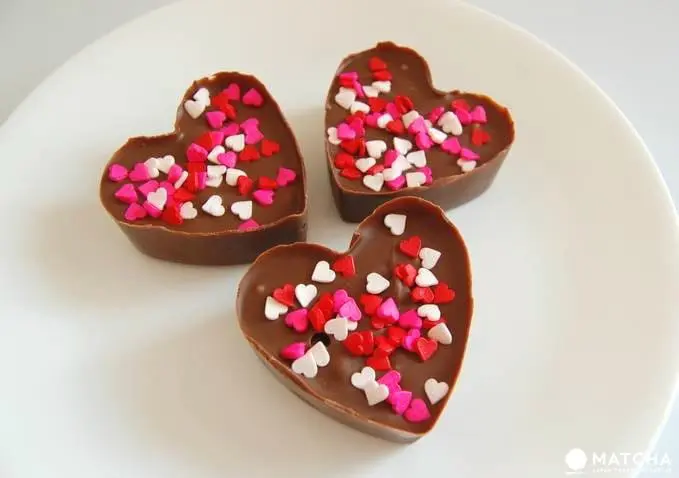
You can celebrate two holidays dedicated to love in the winter in Japan. Valentine’s Day is on February 14 and White Day is on March 14.
On Valentine’s Day, women typically give chocolates to men, and on White Day, men return the favor. However, it is also normal to give and receive chocolates amongst family and friends, so anyone is welcome to enjoy these holidays. Make sure to look for special themed chocolates and desserts.
There are also a number of cafes and chocolate-specialty establishments in Japan where you can treat yourself to something sweet and seasonal. In Tokyo, Dandelion Chocolate is known for its high-quality chocolate bars and hot chocolate infused with Japanese green tea. Celebrate these holidays of love with special chocolate for yourself or with someone special.
Visit Japan in the Winter
The coldest months of the year in Japan are during winter, but this doesn't mean you can't make the most out of travel during this season. From indoor activities to nature, there is so much to see and do during this time. We hope you enjoy this magical time of year.
An awkward Southern California native living in Osaka. Originally came to Japan on the JET Program in Hyogo Prefecture (Kansai) after studying economics in college, and decided to try to stay.
IUC 10-month program graduate. Vegan and interested in all things Japan-related. Left-handed. Very fond of Kansai.






























































![[JR KYUSHU HOTEL Blossom Oita] A hotel directly connected to Oita Station - A comprehensive guide to access!](https://resources.matcha-jp.com/resize/720x2000/2025/10/23-247814.webp)
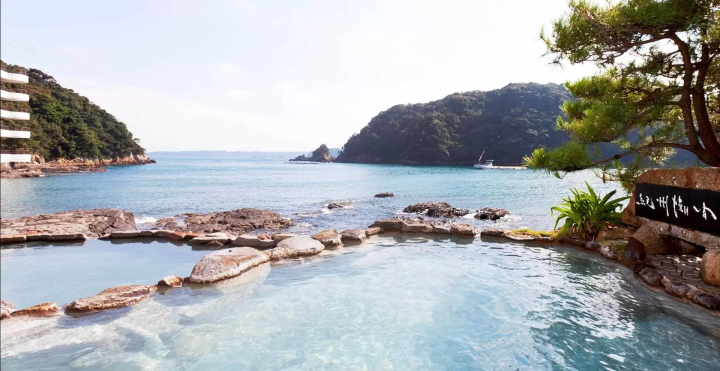
![Deep dive into Japanese brands! A tour of famous leather shoe stores with GENSEI & Nin [Harta Edition]](https://resources.matcha-jp.com/resize/720x2000/2025/12/18-253277.webp)
